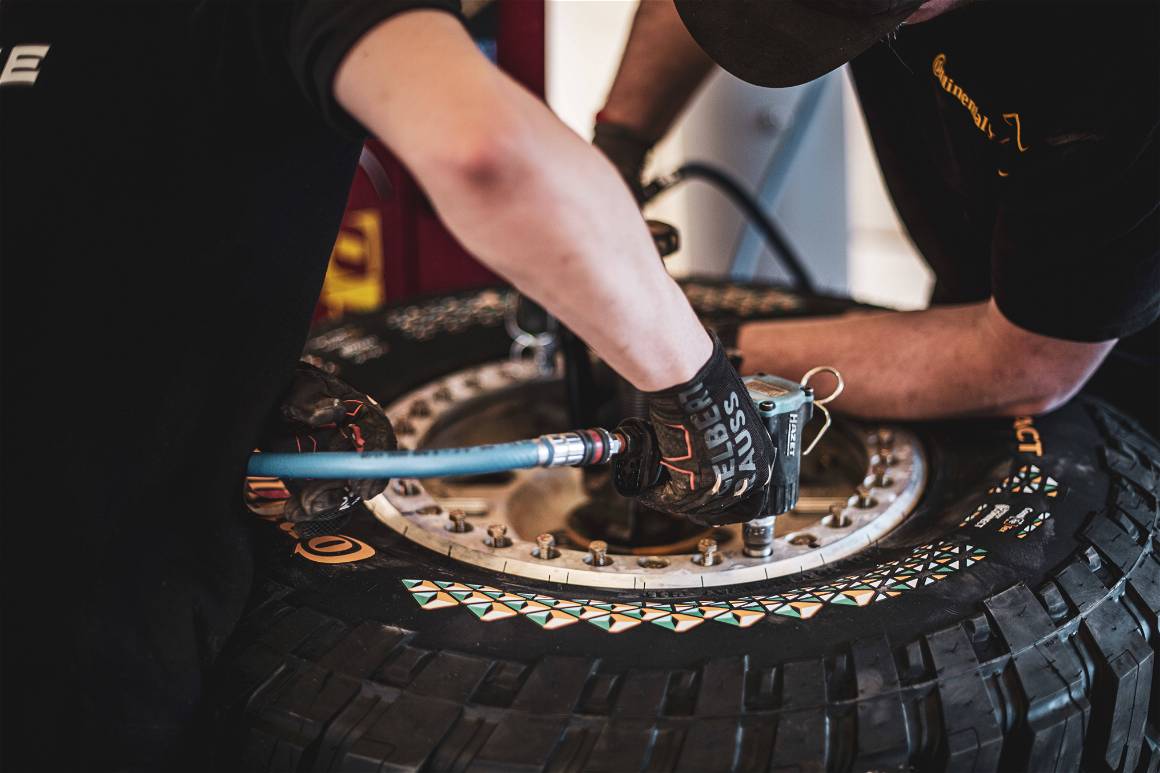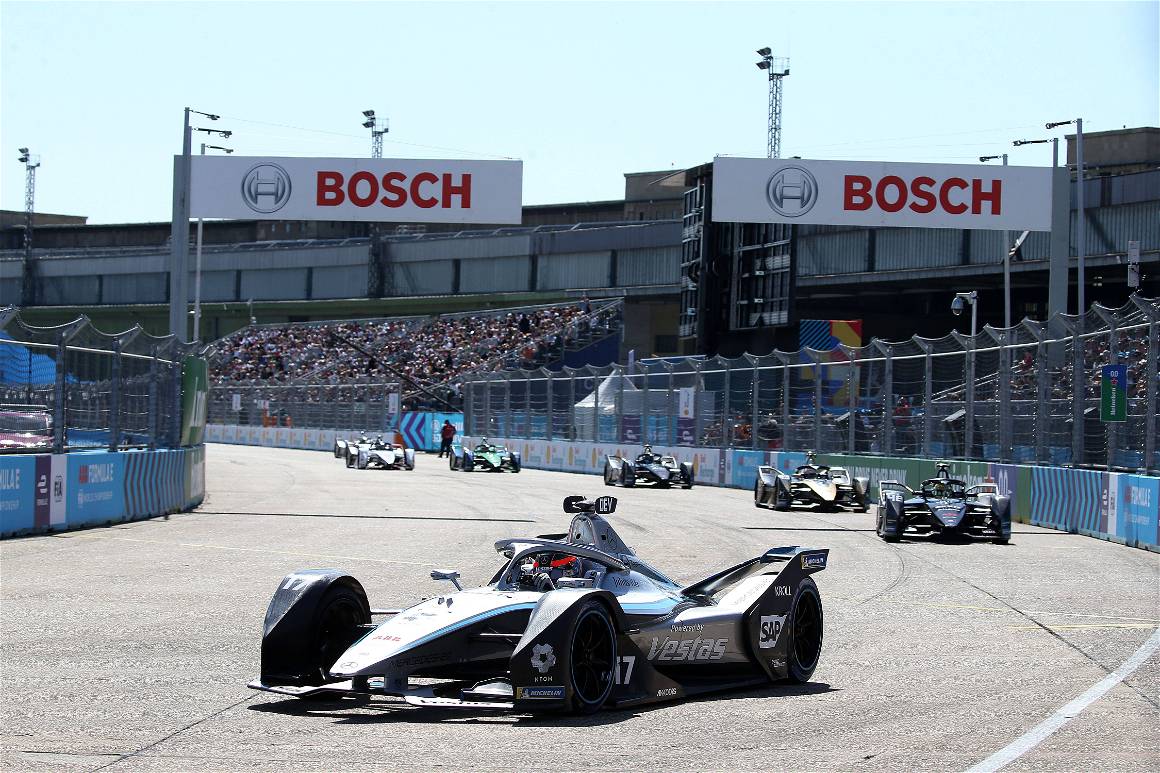Agents like the Sustainable Motorsport Index™ help catalyse the change needed on a systemic level, promoting transparency and accountability when it comes to sustainable practices in motorsport.

Sustainability in Motorsport – An Interview with Dr. Cristiana Pace
It is not as simple as going electric. The motorsport industry has taken some heat for its large carbon footprint, but initiatives like the Sustainable Motorsport Index™, launched by sustainability and strategic management agency Enovation Consulting, are working to change the narrative through research and industry-transparency.
With the emergence of electric motorsport competitions such as Formula E and Extreme E, along with Formula 1 cars running on the most efficient hybrid engines in the world since 2014, we have seen that motorsport can evolve.
As part of our Formula 1 series, IMAGO spoke to Dr. Cristiana Pace, founder and CEO of Enovation Consulting about her work and the prospects for sustainability in motorsport.

I am interested in the Sustainable Motorsport Index™ and the different aspects that go into this movement of making motorsport more environmentally friendly — can you tell me a bit about your role and what drew you to this?
I am the founder and CEO of Enovation Consulting, a purpose-driven sustainability and strategic management agency, working to drive sustainability in motorsport and sport. I am originally an engineer and I have already worked in motorsport for over 20 years, building the legacy between motorsport and safety, before getting my PhD in Sustainability and Strategic Management.
I have always been convinced that ‘if you can’t measure it, you can’t improve it’ and Enovation Consulting brought a data-driven approach to sustainability to motorsport that wasn’t really present in the industry before. I want to future-proof the industry we all know and love by giving motorsport the tools to improve its sustainability performance overall, and to educate fans and stakeholders in general, as motorsport, as any other sports, has the potential to be used as the catalyst for climate education and positive change.
It almost seems like Sustainable Motorsport Index is a sort of an investigator — can you tell me a bit more about its different purposes?
The Sustainable Motorsport Index™ (SMI) is an industry first not-for-profit initiative, which assesses motorsport stakeholders’ sustainability performance against the UN SDGs and the ESG framework. By only benchmarking sustainability performance based on publicly disclosed data of a series of categories of motorsport actors, such as circuits and championships, the SMI is pushing the stakeholders into disclosing and of course doing more.
This approach has previously worked in other industries, as for example in the case of Roland Berger’s Smart Cities Index, where disclosure of sustainability credentials of cities improved rapidly after the publication of the first index or the Standard Ethics Index in European football. In Sport, other indexes exist which account for data given from companies by means of surveys or focus groups. While we’re not trying to say that those indexes have no benefit, they do not encourage stakeholders to use their influential position to try and showcase sustainability best practice, something which the UNFCCC asked the sports industry to do in launching the Sports for Climate Action Framework in 2018. Additionally, as all motorsport stakeholders love a good race, the Sustainable Motorsport Index™ does what has always motivated those working in motorsport: it makes sustainability performance a race for the future that motorsport stakeholders want to win. Because if there’s anything people in this industry hate – it’s losing.

Who is your audience? Who is most interested in this research?
Our research has been published by a wide range of magazines, both industry specific and aimed at the general public. So while the motorsport industry is most likely the one reading these papers with the most interest, it’s not aimed only at motorsport stakeholders. In fact, one of the key aspects of the SMI is that it is very much aligned with ESG indexes from industries outside of motorsport to ensure that rather cocooning itself off, the industry works alongside and develops and adopts best practice from and for a wide range of other stakeholders.
What methods and processes are used to actually measure and compare the practices of motorsport stakeholders’ sustainability? How much man-power does this sort of research require?
We use carefully calibrated indicators and third party verification to assess the sustainability performance of our stakeholders across five broad areas: environment, social, governance, sustainability approach and engagement, international and industry specific accreditations and awards. We are deliberately using a very data-driven approach, because especially when it comes to sustainability it is very easy to fall prey to really great marketing campaigns, that have little to nothing to do with actual sustainability performance. And, again, only data which was publicly available during the data collection period (which is usually about three months long) is considered in the index. Using this approach, which was developed with academic experts, allows us to assess and benchmark individual stakeholders a) completely objectively and b) also compare the industry performance overall with other industries.
In terms of man-power, we are a fairly small team doing the bulk of this work. And while it does take a considerable amount of time and, as I said, is a not-for profit initiative financed by partners, we consider it a worthwhile investment of our time. The index has already grown in the last 6 months and we have a separate department looking at it right now. Of course in an ideal world we would love to find a great philanthropic partner to take this tool to the next level and increase the resource allocated to it.

Surely, new and more efficient types of batteries will emerge in the near future, but I am curious about what you think of the debate surrounding the environmental impacts of lithium batteries powering electric cars?
I am a big believer in innovation, but also of the fair and holistic evaluation of its impact. Whilst battery powered cars have done great progress, other problems related to extraction of cobalt or lithium or recycling of the batteries remain. When evaluating and comparing sustainability initiatives and practices, we need to assess their whole lifecycle, including the extraction, the production and the recycling process of batteries. This philosophy is also reflected in the methodology of the Sustainable Motorsport Index™, elaborated together professor Paolo Taticchi, from UCL, where we used 7 categories and 25 indicators to evaluate the sustainability of each circuit (for the SCI) and championship (for the SChI) in a holistic manner, making sure that all components were addressed.
It is a difficult feat to match the popularity of traditional motorsport like Formula 1 of course. Do you think that Formula E and Extreme E for example, are the future of motorsport?
I think they represent a part of the future of motorsport. As I mentioned in the previous question, electric vehicles should be a considered a stepping stone on the road towards sustainable travel, not the final answer. Also, we should not forget that the future of mobility is multimodal, and as such there is room for all sorts of motorsport, from electric scooter racing, to Formula E to Formula One (the latter with sustainable fuel). Also, internal Combustion Engine Motorsport has been producing sustainable innovations since it’s inception. Formula 1 cars are currently running on the most efficient Hybrid Engines in the world and have been since 2014, the kinetic energy recovery system came out of motorsport and so many more innovations that have found their way either into the automotive industry or beyond. This championship is also going to pioneer sustainable fuel, with the vision of making this fuel available to all the current specs of ICE cars.
Formula E and Extreme E are accelerating innovation in the electric vehicle industry, just like internal combustion engine motorsport has always and will continue to work on making petrol run vehicles run more efficiently and sustainably. Even if from 2030 large parts of the world will only be selling electric vehicles, there will still be billions of internal combustion engines on the road and research such as the one being conducted by Formula 1 and the FIA into developing sustainable drop in fuels can and will have a very important impact on creating a more sustainable world for us all. Therefore, while newer series such as FE and Extreme E 100% have a reason to exist and continue innovating in the future, I would argue that so does more “traditional” motorsport. And that is not even to mention the power that for example Formula 1 has to influence its millions and millions of fans around the world to make more sustainable choices.


Maybe a bit off-topic, but I have to ask: As polarizing as Elon Musk may be, Tesla could be considered for non-experts a pioneer in electric sports cars — I’m curious about your opinion on this and all the behind-the-scenes agents who have pushed this movement of sustainable motorsport over the last decade or so. What do you think is the mainstream narrative surrounding this and is it accurate?
As behind the scenes as it could seem, I have worked at an electric sport car prototype years before Tesla came to the play, but unfortunately this project was halted due to the idea that there was no need in the market for electric sports cars. That prototype had it all, it was appealing, great design, was working well and ahead of times, just people were not visionary enough to believe it could make it. I believe that the firm was too well established to risk being the disruptors, same as in motorsport. Sometimes new, agile companies are best placed to make changes, you just need a visionary leader and hard work.



